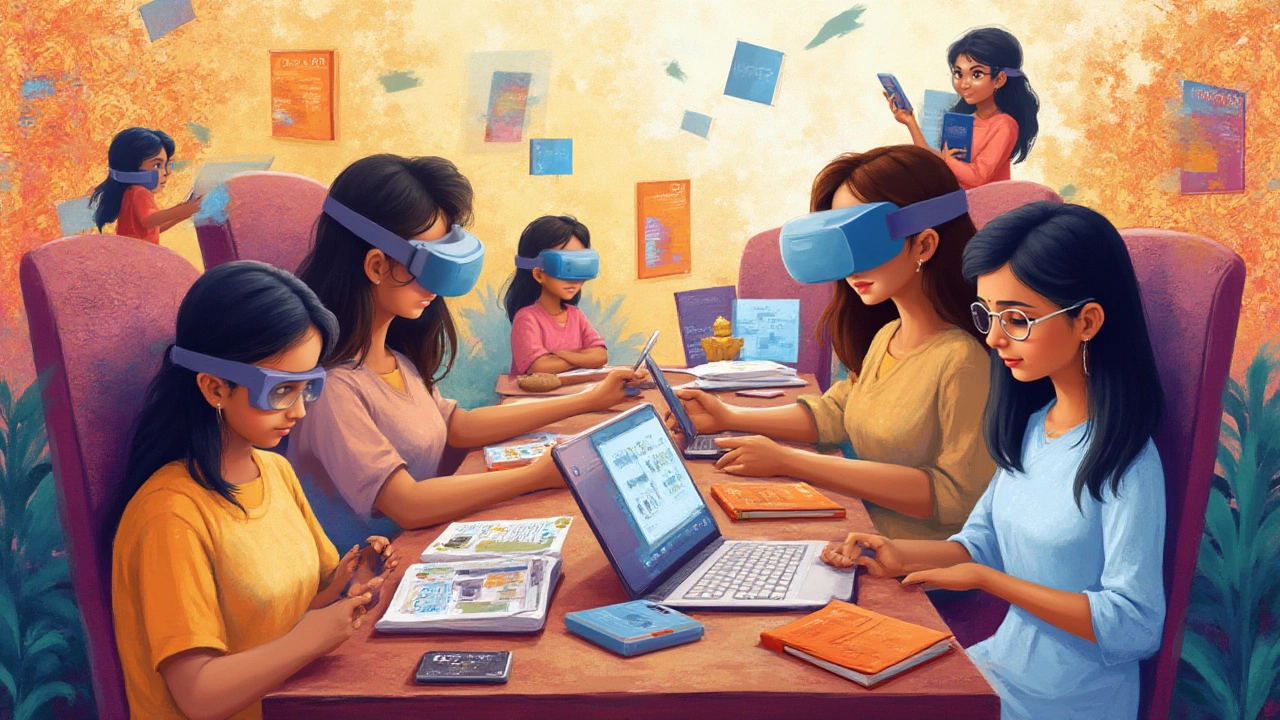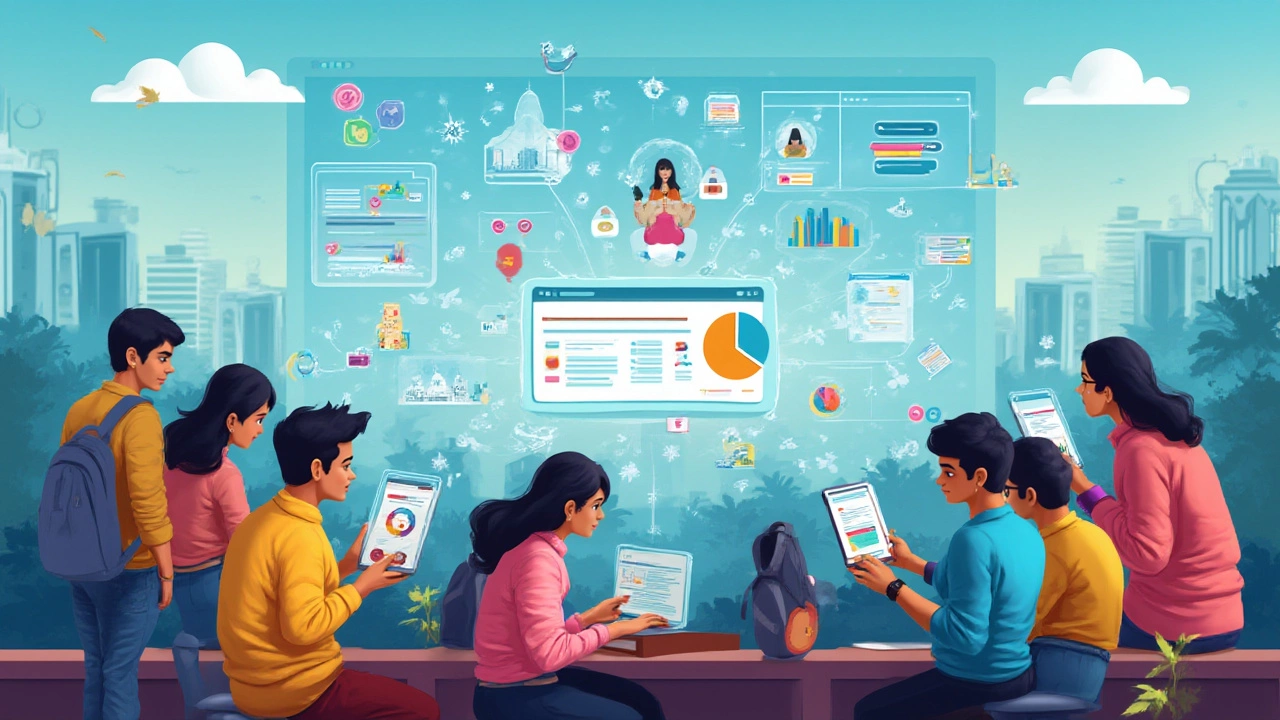Ever catch yourself wondering which learning platform everyone seems to use? It’s not just students and teachers who are obsessed—almost every workplace and skill-builder has hopped on this train. Learning platforms aren’t just extra resources anymore. They’re the backbone of education, job training, career changes, and even casual hobbies now. The demand sky-rocketed during COVID-19, but it never slowed down. So, which platform stands above the rest in 2025? Let’s break the story wide open.
The Power Players: Which Platform Leads the Crowd?
You might guess a big name like Udemy or LinkedIn Learning takes the crown, but the real juggernaut? It’s Coursera. This platform commands a massive user base, partnering with 275+ universities and organizations worldwide. In 2025, Coursera reported crossing 146 million learners. No other learning platform comes close. Why? Because Coursera does more than just offer courses—it’s a gateway to accredited degrees, job-ready certificates, and even career counseling all in one spot. It’s almost like a digital campus that doesn’t sleep, with every major subject covered, live projects, peer-reviewed assignments, and smart career paths built right in.
Of course, not everyone needs a college degree online. For those hunting skills in tech or creative fields, YouTube is the wild card. It isn’t a traditional learning platform, but its education channel pulls in 500 million+ visitors a day. It’s proof people crave free, bite-sized learning. But when it comes to professional clout, certifications, and trusted partners, Coursera is king. Over 3,000+ institutions and 100,000 companies actively use it for upskilling employees. It’s the platform Google, IBM, Meta, and top universities trust with their courses.
Sometimes, niche is powerful too. For coders and future software engineers, platforms like Udemy and edX aren’t far behind. Udemy just hit the 71 million mark. edX, the original MIT and Harvard baby, now has 60 million learners. But Coursera’s lead is solid, thanks to a relentless push for accreditation and constant updates to keep courses fresh. With new trends popping up every year—AI, blockchain, green tech—Coursera drops new specializations faster than anyone, and people keep flocking back.
What Makes a Learning Platform ‘Most Used’? It’s More Than a Headcount
So why is Coursera so sticky for millions? It comes down to access, trust, and flexibility. Anyone, from high school students in India to working parents in Canada, can register for free. You can browse classes for almost any skill or earn a complete master’s online. And instead of rigid class schedules, you set your pace. Who likes waking up for early morning lectures, anyway?
Accreditation matters more than ever. Coursera didn’t just survive the remote learning wave—it evolved. You aren’t getting generic video lectures. Classes are led by actual professors from Stanford, Duke, or Google insiders. The certificates you snag aren’t “just for fun”—they’re accepted in the job market and even by universities for transfer credits. Coursera also jumped on AI early, adding AI-powered learning assistance, personalized quizzes, and options for neurodiverse learners. It’s not just about watching a video but getting guided, hands-on learning.
Community plays a part too. Most ‘top’ platforms weave in active forums, real project feedback, and networking. Coursera’s forums are buzzing 24/7 with global learners. Working with a project group from Brazil, Egypt, and Vietnam isn’t rare there—it’s normal. Plus, mobile-first features make sure you can pick up where you left off, even on a bus ride.

The Evolution of Online Learning: How Did We Get Here?
Ten years ago, online learning meant clunky videos and endless PowerPoints. Fast forward to today—what a transformation. COVID-19 was only the starting gun. Schools shut down, workplaces pivoted, and suddenly every generation was logging on. Platforms scrambled to keep up. Early on, alternatives like Khan Academy or Codecademy were popular with DIY learners. But scale, quality, and scope set the pace.
What redefined the game was connecting learners to jobs and formal education. Coursera and edX convinced colleges to hand over real courses, with professors onboard. LinkedIn Learning tied courses to your actual career path, letting you badge up your profile and attract recruiters. Udemy turned anyone with a webcam into a global teacher, launching thousands of specific courses wicked fast. And YouTube? It sneaked into the mix as your free tutor, always available for that weird Excel formula or challenging guitar riff.
By 2025, AI entered the chat. Adaptive courses respond to your answers and speed, tossing extra practice or challenges when it senses you’re coasting. Simulations, AR/VR labs for medical or design students, even AI-powered peer reviews—all of this is now baked into the top platforms for a more personal touch. But the real kicker? The explosion in partnerships. Law, business, and creative giants all plugged their training into these platforms, betting on a future led by on-demand, anytime learning.
Tips for Picking—and Thriving on—the Most Used Platforms
With so many choices, even knowing what’s ‘most used’ doesn’t make it simpler. Picking the right platform takes nudging your goals against their strengths. If you need an accredited credential, Coursera or edX are your best bets. Eyeing pure tech or creativity? Udemy, LinkedIn Learning, or even Skillshare might suit you best. Want free, fast answers? YouTube’s for you. But how to get the most out of any platform?
- Set a schedule: Treat it like a real class. Learning slumps start when you skip days. Most platforms let you add course reminders or calendar blocks—use ‘em!
- Leverage forums: Don’t just binge the videos. Hop into discussions, ask questions, and review others’ work. It’s where the magic (and networking) happens.
- Mix formats: Switch between video lectures, reading assignments, quizzes, and projects. This keeps you sharp and stops boredom from setting in.
- Track progress: Platforms like Coursera award badges, certificates, or even transcripts. Keep these on your LinkedIn or CV for a quick skill boost.
- Explore mobile: Download the app! Coursera and Udemy’s mobile features are outstanding—watch on commutes, quiz in a café, send questions on the go.
- Audit before you pay: Almost every platform lets you preview lessons, course outlines, and syllabi. Test drive before committing cash.
- Use filters and search smarts: Sorting by reviews, duration, or language can save you hours hunting the perfect fit.
- Personalize playlists: On platforms like LinkedIn Learning or Udemy, build your course sequence based on what complements your next career step.
- Connect with instructors: Many courses offer direct contact or Q&A sessions. The experts love when learners reach out—it proves the course works.
Above all, take breaks, set goals, and actually apply what you learn. Watching five Python courses won’t matter if you never code up your own mini project.

What’s Next for Learning Platforms? Trends to Watch
Don’t expect the top platforms to stay static. The next wave is already rolling in. Microlearning—think TikTok for education—is expanding, pushing platforms to deliver sharper, shorter content with instant feedback. AI-tutoring will get personal, checking your progress and firing custom recommendations before you even ask. Expect deep dives into hands-on labs, simulated work environments, and real-time problem solving—with a level of personalization classroom-based teaching can’t match.
Coursera is rolling out new partnerships with global employers, letting you go from class to job in weeks, not just months or years. Udemy is testing subscription models, bundling entire skill sets instead of one-off courses. Expect more VR integration—medical students can ‘walk through’ a surgery, engineers can build circuits in 3D before touching a real board. And free education? YouTube and Khan Academy are bringing on more interactive features to lure in anyone still on the fence.
If you’re asking whether traditional college will fade, don’t bet on it. Instead, look for hybrid approaches. Companies and universities are collaborating, offering stackable credentials where online courses chip away at traditional degree requirements. Young learners, professionals, and even retirees are mixing and matching—picking what fits rather than sticking to what’s standard.
One constant? The hunger to learn never slows down. Whether you’re aiming for a top-tier degree, a job switch, or mastering something new just for fun, a learning platform is waiting. And with so much choice, the only risk is not starting at all.
